Significant Discovery Found in Tomb M1 of Wangshanqiao Cemetery in Jingzhou, Hubei Province
From:Chinese Archaeology NetWriter:Date:2015-06-15
Wangshanqiao Cemetery is located in Jingzhou City, Hubei Province. In 1965, tombs M1-4 of Wangshanqiao Cemetery were cleared when building the water dam. The famous No.1 Sword in China, that is, the sword of Goujian, the king of Yue State, was discovered in the M1, a Chu tomb of Wangshanqiao. According to the archaeological survey, the Wangshanqiao Cemetery constitutes 2 middle or small sized Chu tombs and a chariot-horse pit.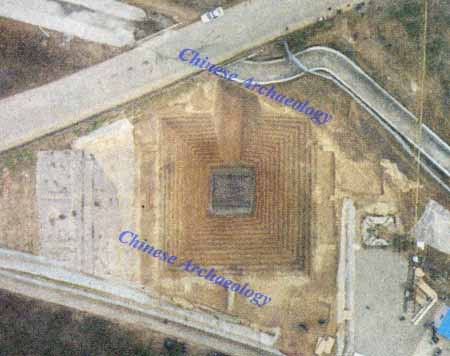
Aerial View of the tomb M1 at Wangshanqiao cemetery, Hubei Province
In October 18th, 2014, the archaeological excavation of Wangshanqiao Cemetery started again. During the January of 2015, the coffin chamber was cleared. The chamber and remains in it were all packed up as a whole and taken back to the lab.
Only the western part of the mound is preserved and about 5m high residue. On the edge of the western mound, there is an earth-retaining wall, about 1.2m wide and 5m long. Its longitudinal section is triangular which might be related to the heaping up of the mound.
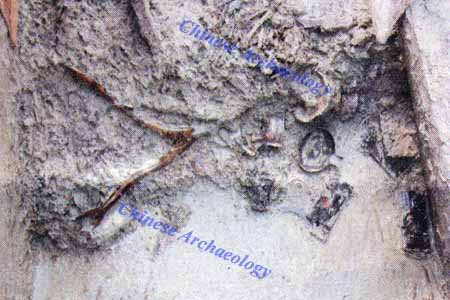
grave goods found in the east chamber of tomb M1
M1 is an earthen shaft pit tomb in the plane of character “甲“ with a wooden outer-coffin, east-west oriented. The tomb pit is square in plane, 34m long from the east to the west and 32m long from the south to the north. The cover of the outer coffin is about 10m below the opening of the tomb. 13 steps are found in the pit. Besides, there is a sloping tomb passage in the east.
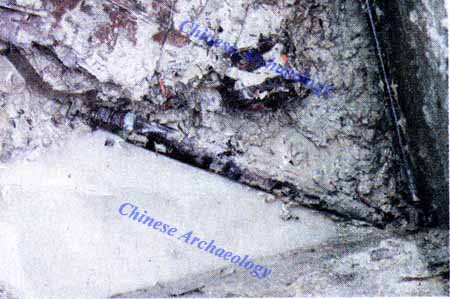
Copper sword found in the east chamber of tomb M1 at Wangshanqiao cemetery
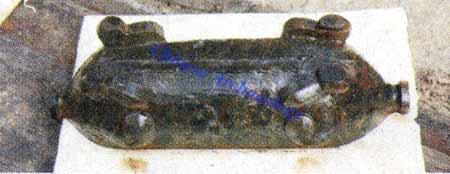
Pig-shaped lacquer box for the wine vessels unearthed from the north chamber of tomb M1
There are 2 layers of outer coffins and 2 layers of inner coffins. The cover of first outer coffin consists of 19 square wooden boards, each of which is about 7.6m long, 0.40m wide and 0.4m thick. The first layer of outer coffin divide the chamber into 5 parts, including the east, west, south, north and middle one. And the coffin is in the middle part. The 5 first-layer outer coffins are arranged in the shape between character “回” and “井” , where the inner coffin is in the center with inside outer-coffin in its perimeter. There are double inner coffins inside. The first one is square coffin, while the second one is arched hanging coffin. So far, there are 420 cultural remains found, including bamboo and wooden lacquer wares, copper, jade, horn, bone artifacts, pottery and so on. The bamboo and wood lacquer artifacts include deer laid down, tomb guardian beasts, se- instruments, an-table, ji-table, zu-chopping blocks, dou-vessels with stand, boxes for the wine, ear cups, box for sword, shield, bamboo-plaited suitcases and so on. The copper artifacts are mainly copper swords, arrowheads, ge-daggers, horse bits, mirrors and so on. Jade artifacts contain jade decorations, jade horse bits, jade ornaments for horse head and etc. Bone and horn artifacts range from bridles, zun-cases for dagger and so on. Besides, there are lots of fauna and flora remains, including cow bones, skeletons of small animals, lotus seeds and gingers, chestnuts, herb melon seeds and etc. The inner coffin is still remained to clear in the lab. According to the jade figurines and jade bi-rings in the cover of the inner coffin, there should be plenty of jade artifacts. However, the exact number is unidentified. There are bamboo-slips being discovered in the southern first-layer outer coffin. Among them, there is a slip with the lists of items as burial goods which is also needed further identification in the lab.
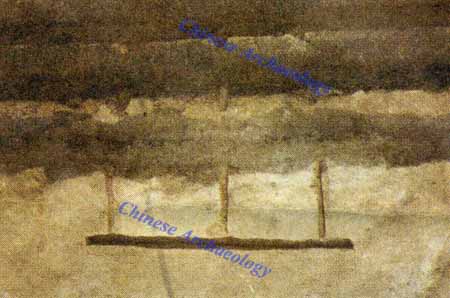
a pair of features in the shape of character “山” found in the middle of the south and north sides of tomb pit
In the middle of the south and north sides of tomb pit, there are a pair of features in the shape of character “山”, which are similar to the foundation ditches of the house, and about 35cm wide and 10cm deep. Besides, there is a U-shaped shallow ditch in the shoulder of the steps of the tomb pit, which might be the remains for placing wood blocks. Together with the “山” shaped features, it probably belongs to the facilities to place coffin boards in the bottom of the tomb.

wooden sword box found in the west chamber of tomb M1
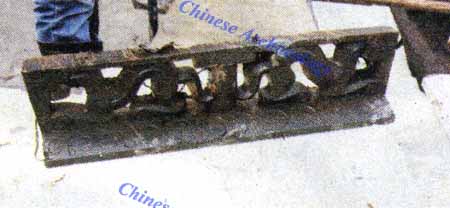
wooden lacquer base of screen found in the north chamber of tomb M1
There is a circular sacrificial pit in about 1m diameter, which is 6m to the north of the tomb pit. It hasn’t been cleared up yet.
A wrist pit is uncovered beneath the bottom of outer coffin and in the position of the tomb owner’s legs. The pit is oval in plane, 1.03m diameter from the east to the west, 0.98m diameter from the south to the north and 0.42 deep. The pit is in the shape of pot bottom. There is sheep in it with its head towards south and feet on the above.
The date of tomb M1 in Wangshanqiao Cemetery is preliminarily predicted to be the middle period of Warring States. (Translator: Ma Huanhuan)

